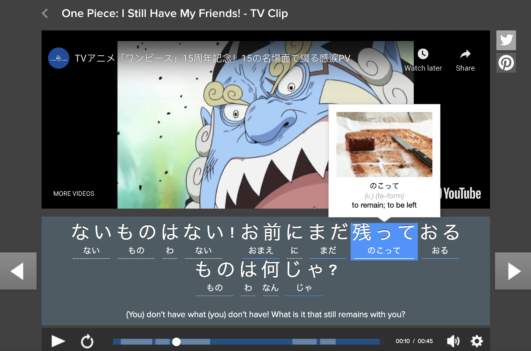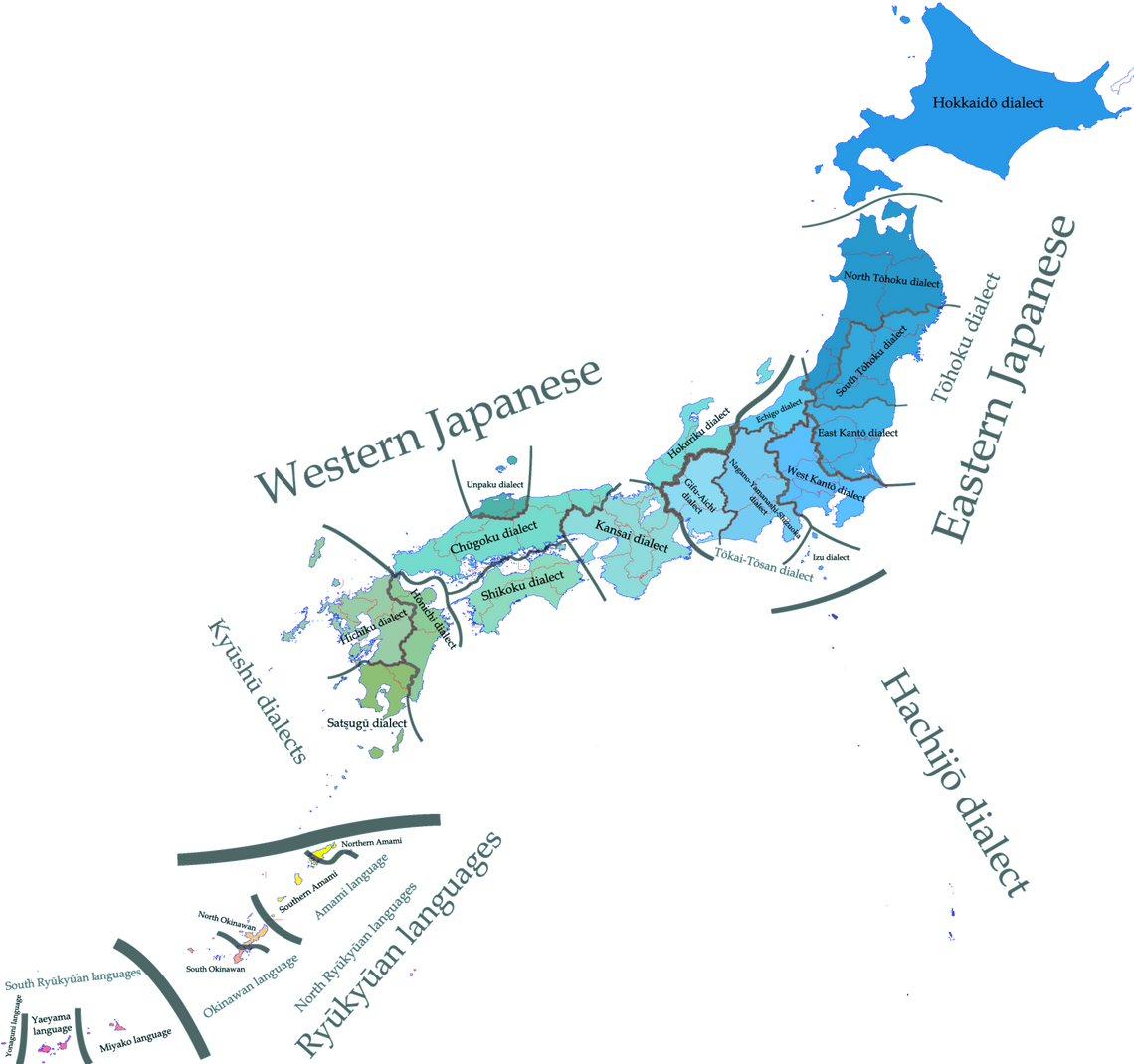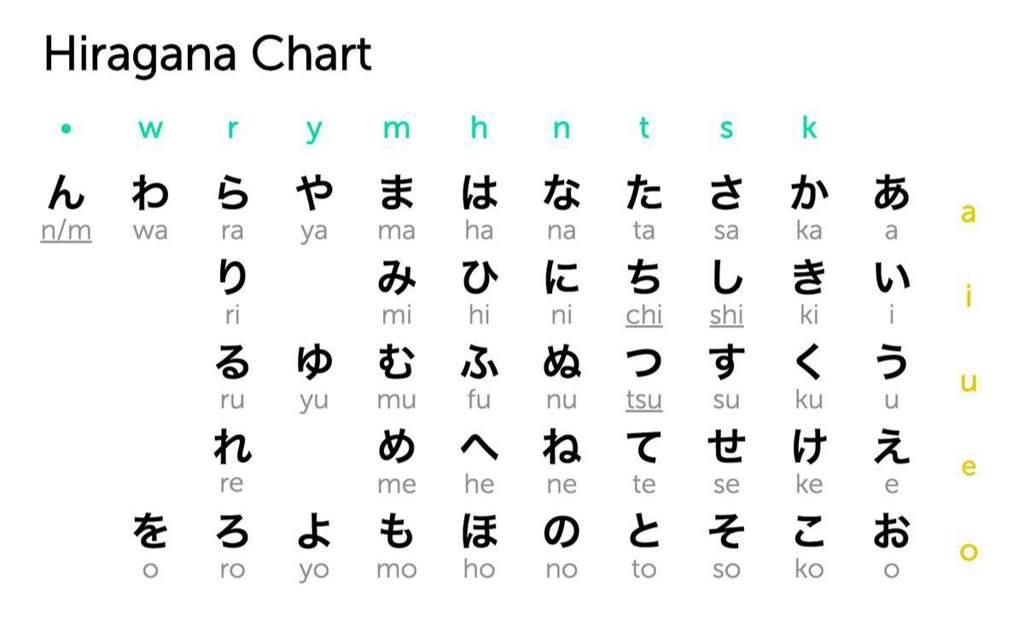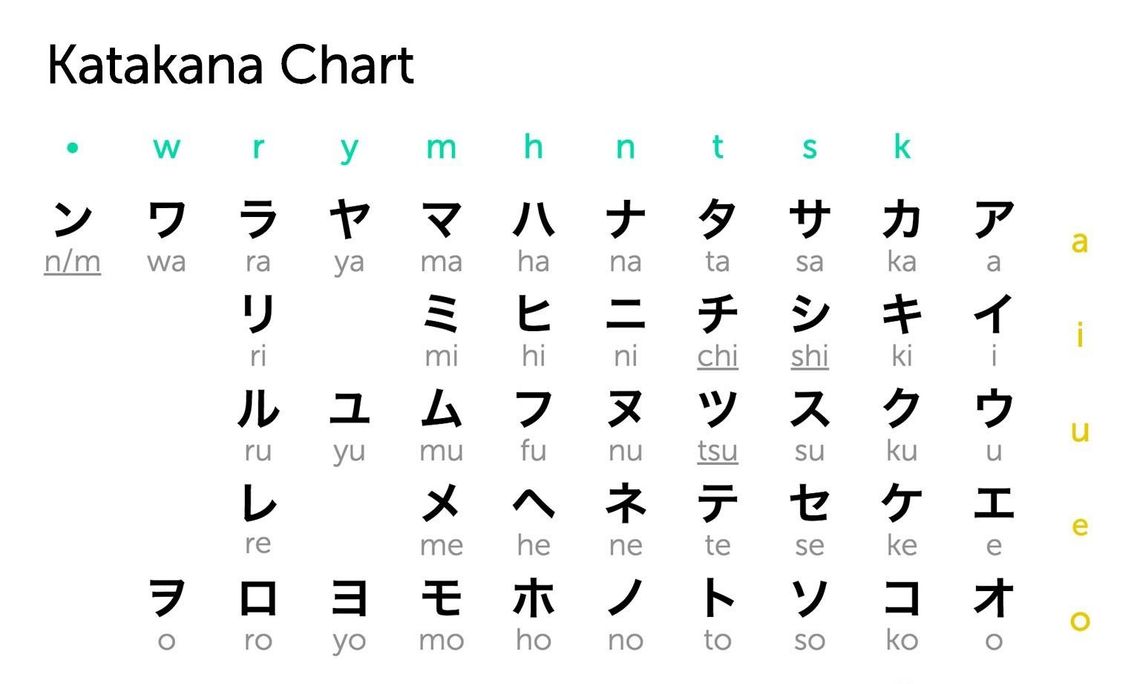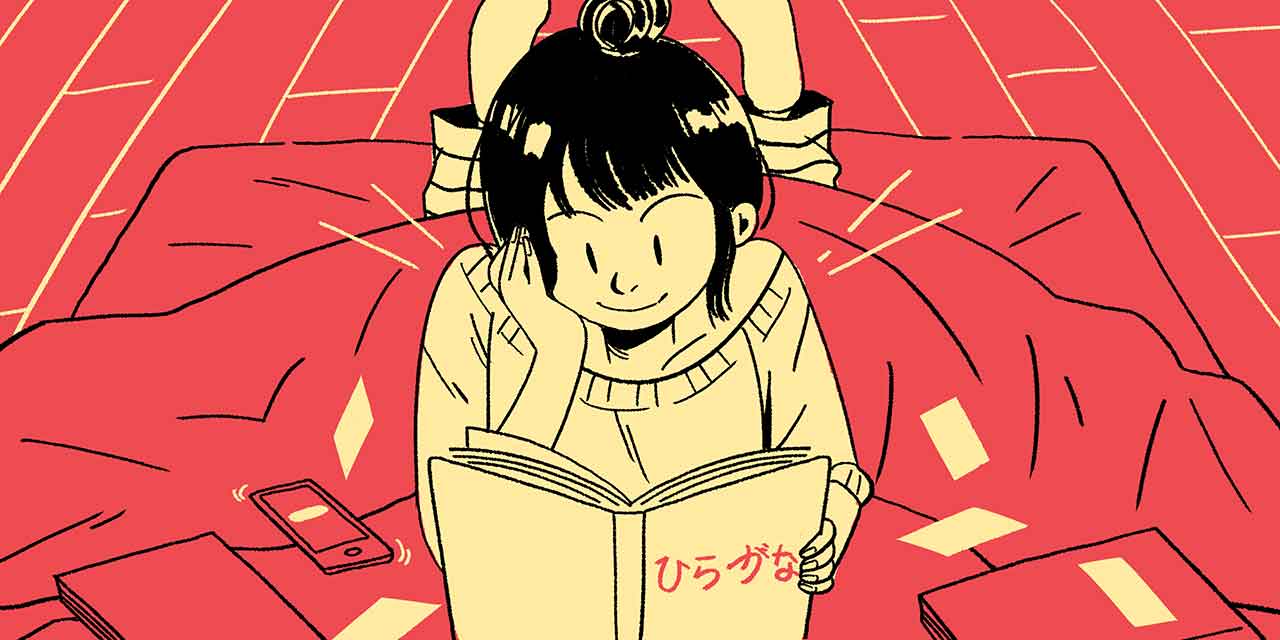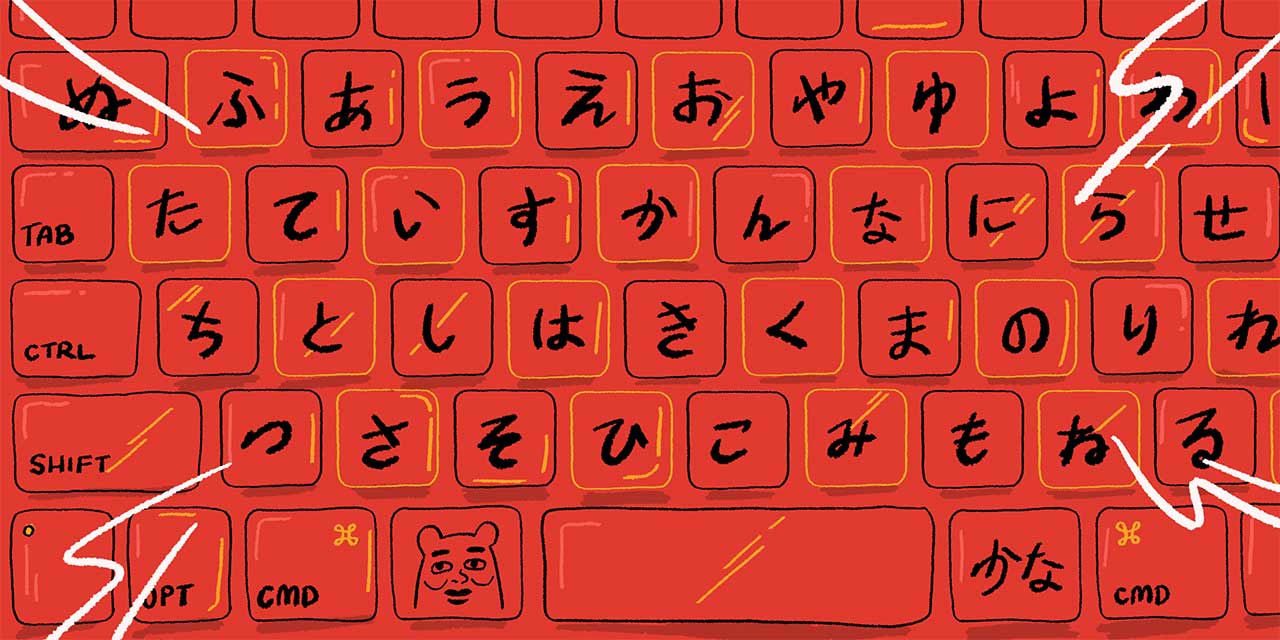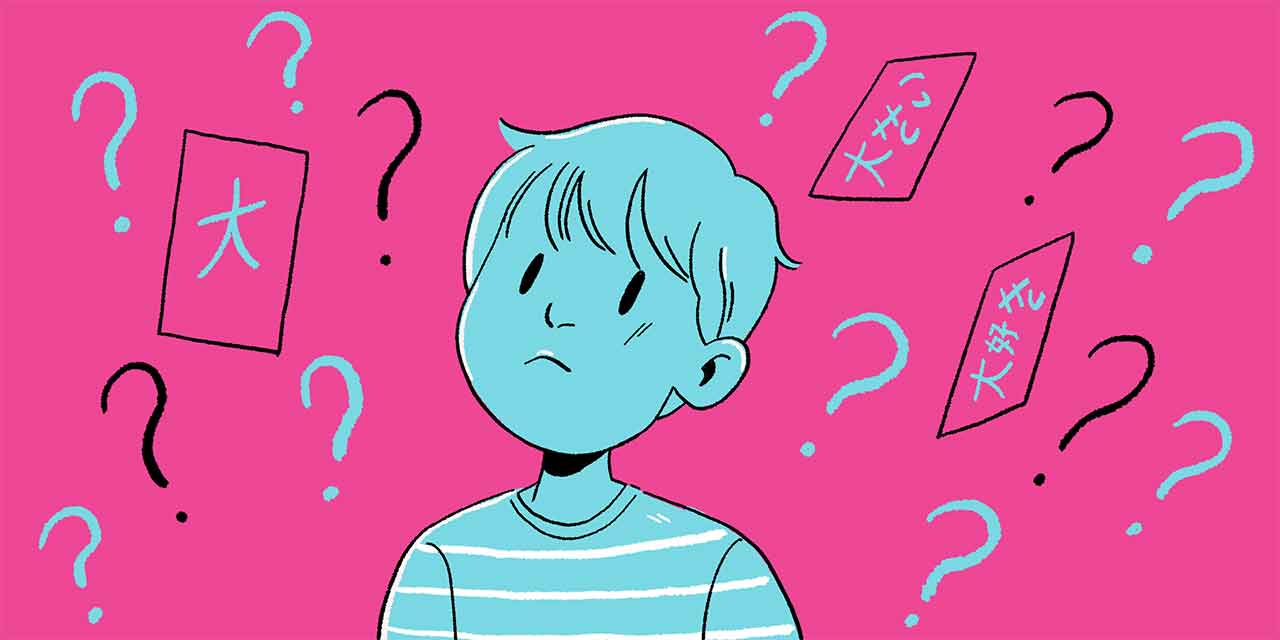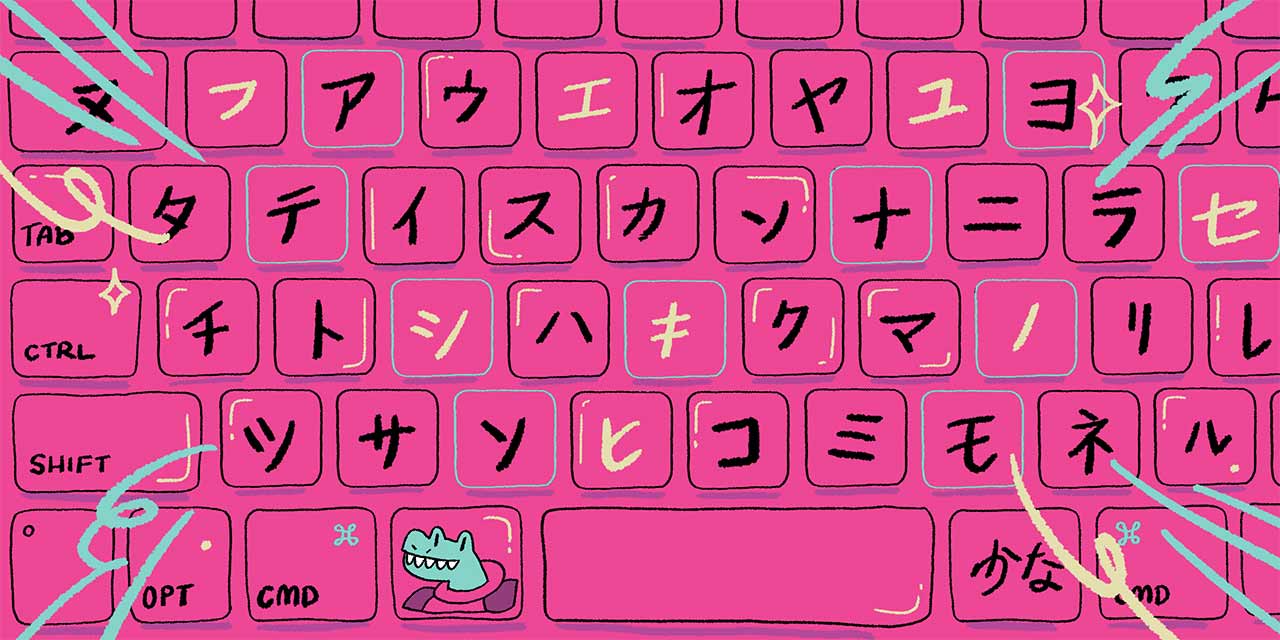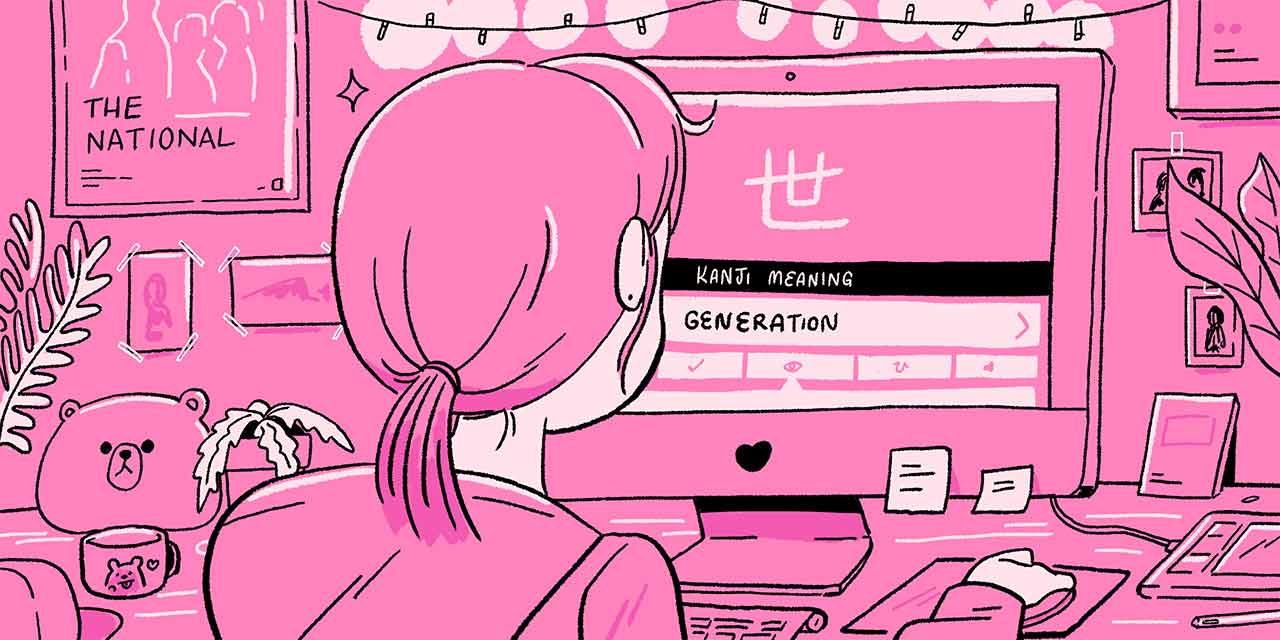How to study japanese
How to study japanese
Как начать учить японский
Подборка материалов по азбукам, грамматике и практике.
Простые подкасты для начинающих от NHK WORLD. Общие фразы, немного грамматики.
Инструкция для начинающих изучать японский по всем этапам. Там же можно найти список учебников.
Написан на английском. Я использовал расширение Google-переводчик и переводил страницу.
Самое важное — это гайды для изучения хираганы и катаканы. Выучить азбуку по ним можно за пару дней. Конечно, читать будете очень медленно, по пять секунд вспоминая каждую букву, но это позволит сразу перейти к практике, что гораздо лучше, чем несколько месяцев втыкать в приложение. Тоже на английском, но с переводчиком страниц и картинками всё понятно.
Подробный гайд на русском языке для начинающих. В нём изложен лучший подход к самостоятельному изучению японского языка + способ, как быстрее учить кандзи.
Также у автора есть подборка со множеством штук:
Сайт для изучения грамматики японского языка.
Список визуальных новелл, которые подойдут начинающим.
Новеллы часто требуют японскую локаль, то есть нужно переключить системный язык на японский, что ломает шрифты в некоторых программах. Поэтому можно скачать эмулятор локали.
Список манги для начинающих.
А вот на этом сайте можно смотреть фильмы, мультфильмы, аниме с японскими субтитрами.
Onomappu — японец про язык, культуру и всякое такое. У всех видео есть двойные субтитры японский-русский.
Ask Japanes — интервью с японцами. Много видео с русскими субтитрами.
Solo Solo Travel — путешествия. Русские субтитры.
Каналы с похождениями по Японии от первого лица:
Как там дела в 45-ом?
Ознакомиться бы вам с националистическим дискурсом японской нации и понять, что светит вам максимум там мытьё унитазов за господами
Судя по вступлению, и по моему опыту изучения английского. Гайд реально годный. Надо будет приступить к нему (и не лениться как тварь последняя)
Покупаешь плэйстэйшн без кириллицы и вуаля, базовый курс японского пройден
А в итоге выучиваешь только катакану и ингришь. Для меня было большим сюрпризом, что много текста в тех же играх на японском на самом деле не на японском
И как успехи по изучению по этим методикам? Если прям с нуля. Сколько времени надо чтобы понимать указатели, лёгкий текст на Википедии или хотя бы 30 процентов аниме?
Очень много:( и просто адски надо заставлять себя учить что-то новое, если Вы такой же как и я ленивый прокрастинатор…
Много всего пробовал с нуля, больше всего понравилось и эффект был от приложухи Human Japanese, рекомендую попробовать, там на английском, но стиль объяснения языка самый крутой из всего, что пробовал
Времени на изучение японского нужно нереально дохрена, за это же время можно 3-4 европейских языка выучить
Три месяца, если самообучение. Месяц, если нужно только чтение и понимание текста.
Базовое требование для знания языка 3000 иероглифов. У многих может быть по несколько значений, чтений, смыслов и созданий других звуков в паре. Умножайте и думайте, сколько вам учить БАЗУ.
Кажется, никто не оценил картинку в шапке (возможно, потому что начинающие не знают, а продолжающие не обращают внимания на статью 😅?)
А есть ли смысл учить по мобильным приложениям? Слышал много положительного о busuu, например. Или в любом случае лучше будет засесть за обычные учебники?
Если как вспомогательные, то да. Обязательно приложение Анки для слов и кандзи, но там нужно хорошие колоды найти.
Я пробовал несколько приложений для азбуки и кандзи, но все они наоборот меня тормозили.
Или в любом случае лучше будет засесть за обычные учебники?
Teach Yourself Japanese in 10 Steps: The Beginner’s Guide
Not everyone who learned to speak fluent Japanese studied in a classroom.
Take me, for example—I started from scratch and got up to a solid advanced skill level with a realistic study plan, online courses, a notebook and some elbow grease.
I’m living proof that with all the resources online today, it is easier than ever to learn Japanese on your own.
Whether you’re looking to teach yourself Japanese at home or just need some extra tips to help you advance, read on.
The art of teaching yourself is easily learned.
Contents
Download: This blog post is available as a convenient and portable PDF that you can take anywhere. Click here to get a copy. (Download)
10 Simple Steps to Teach Yourself Japanese
1. Learn to Read Hiragana
Learning Japanese for beginners may seem like a huge step—and it is, but it’s a wonderful step to take!
One of the fundamental topics to cover when you start to learn Japanese is learning to read hiragana. Hiragana is one of the elements of the Japanese writing system so it’s a pretty important skill to learn.
The good news is that this isn’t a difficult skill to learn. There are some excellent resources available for beginning learners.
YouTube videos are an ideal place to become familiar with hiragana. This one called “Learn All Hiragana in 1 Hour” discusses essentials, including font variation. The neat thing about this video is the fact that it uses sweet illustrations to help learners remember the various forms. Also, there are quizzes to gauge progress.
Study resources allow learners to practice hiragana. This site allows learners to determine the pace of learning. Choose the number of hiragana to study and those are the focal points of the lesson. It’s great to have an individualized option!
Part of learning hiragana is becoming comfortable writing it. Downloading and printing out Hiragana writing practice sheets will help you get comfortable with writing Japanese through step-by-step instructions and repetition.
2. Become Familiar with Katakana
Katakana is another component of the Japanese writing system that should be part of a beginner Japanese program.
YouTube videos provide excellent instruction on this topic as well. “How to Read and Write Katakana Alphabet” begins with the absolute essentials, including the type of pens and paper to use to make the process easy. It demonstrates each stroke of each character slowly so learners can follow along.
Learning somehow feels more interactive when games are involved. There are katakana games to give learners lots of entertainment and practice!
A typing converter is also a handy resource for beginning Japanese learners. It’s a fabulous tool and it’s easy to use—simply type in a word and the converter shows the word and its katakana!
3. Familiarize Yourself with Kanji
Again, YouTube provides amazing resources for beginning Japanese learners. “Learn Kanji with Vocab for Beginners” has excellent drawings and explanations.
Practice is essential for beginning Japanese learners. Adding kanji flashcard practice to a study program is an almost-foolproof way to power up skills.
Sites like Study Kanji do an excellent job of bringing basic kanji to learners. Use them to quiz your skills (there is a scorekeeper right on the page) or just to learn. Either method is helpful!
4. Build a Core Vocabulary
When you embark on the journey to teach yourself beginner Japanese one of the most important things you should do is build a core vocabulary.
This fundamental vocabulary is essential for reading, writing, speaking and listening. It is what will allow you to build skills on what you already know—that is, the core vocabulary.
It isn’t difficult to accomplish this.
One of the fastest ways to build a core vocabulary is to learn some “loan words”—they are words that are so close to English words that they will feel very natural to learn and use. One example of that idea is seen in the word “camera”:
Begin with the very basics to build this core vocabulary. Think about the conversational tidbits you use to introduce yourself, say “please” and “thank you” or to answer questions.
Japanese flashcards are an excellent resource for learning basic vocabulary. They can be entertaining to use, especially if you challenge yourself to learn a certain number of words or phrases each day.
5. Learn Basic Japanese Pronunciation
Beginner Japanese learners should focus some time and energy on learning Japanese pronunciation.
A good pronunciation dictionary is essential. The Forvo pronunciation guide is a wonderful resource for any Japanese learner, not just beginners.
It offers essential topics, such as greetings, fashion and more, as well as useful travel phrases. Additionally, to find a specific word it’s easy to use the search bar. Pronunciation practice is a breeze with this site!
The website Japanese Professor clearly explains the rules of Japanese pronunciation. The tables and notes on pitch, spelling and other pertinent facts offers beginning Japanese learners insight into the language.
A handy Japanese app is a mobile method for practicing pronunciation anytime. Apps like this one offer learners the chance to fill small pockets of spare time with language learning. I keep language apps on my phone to practice vocabulary and speaking skills!
Learn Japanese Phrases and Words is available for iOS and available for Android, as well.
The app is fun to use—a Japanese-speaking parrot is the method for delivery of words and phrases, and that’s just an entertaining addition to any learning program! It also reminds me that the “parroting” technique (repeating Japanese after it’s spoken) is also a wonderful way to learn pronunciation!
The app doesn’t require an internet connection so this is an off-the-grid learning resource that brings essential pronunciation practice virtually anywhere!
6. Start Reading Japanese Books
Most people choose between one of two Japanese language book series. They are 「みんなの日本語」 minna no nihongo (Japanese for Everyone) and 「げんき」 genki (vigor).
If you are attending a Japanese class, you are probably already using one of these books. The general consensus is that both books are pretty good, but if you are serious about learning Japanese, and if you are ready to set aside a good portion of your time on a daily basis, then minna no nihongo is the book for you.
Even if you decide not to learn from it, it is a very good reference for the Japanese language.
minna no nihongo is extremely thorough. It teaches you how to apply its lessons in many different cases, even uncommon or unexpected ones.
Having looked at genki I feel that the book doesn’t really aim to satisfy my curiosity about Japanese. If I am wondering about some obscure application of Japanese grammar the answer is almost always more likely to be in minna no nihongo.
That being said, if you don’t have that much time to commit to learning on your own, then genki might be the book for you.
Its exercises are shorter and less involved. It teaches you what you need to get going with the Japanese language and doesn’t demand many hours per week. It may be much easier to stay motivated with genki.
7. Watch Subtitled Movies
Did you know that many Europeans learn English through movies and television?
As American culture has spread rapidly over the past several decades, so has the English language. As a nonnative speaker, I myself learned English primarily through American movies and TV series.
With subtitles on, I could eventually figure out how words fit together and formed sentences. Sure, I had English classes in school too, but by the time those started, I had already learned the basic stuff.
When you learn via this method, depending on how much you know already, you will keep thinking about different ways in which the words of the subtitles fit together.
Most of the time, you come up with some ideas that turn out to be wrong—but that’s alright. When you finally do get the right idea in your head it will stick. Moreover, you will have learned some of the ways in which the language doesn’t always work as you would expect.
You may decide to not spend that much time learning via this method. I wouldn’t say it’s the most efficient, but it’s probably one of the more entertaining ones.
It’s a fantastic supplement to any other language learning methods. Think of it as a puzzle that you will be better at solving over time.
When searching for movies, try to find some in which they speak real-life Japanese instead of the unique speech style used in most anime.
(That being said, it is quite possible to learn Japanese through anime programs if you employ the right tactics).
As for some movie recommendations, a few of my personal favorites are: Yojimbo (1961), High and Low (1963), Ikiru (1952) and Spirited Away (2001).
If you like animation and Japanese traditional culture, I can definitely recommend any works by Hayao Miyazaki.
8. Watch Japanese Television
This is probably for those of you who have already learned a bit.
A lot of Japanese TV consists of debating panels that collectively discuss news stories, interview guests or reporters and so on.
The discussions are spoken in fast-paced everyday Japanese because it’s intended for Japanese people. It’s pretty difficult to understand even if you are already familiar with the language for the simple reason that it’s so fast.
However, this may be what you actually need to practice your listening skills. If you can follow what people say on talk shows, then your Japanese listening skills are already very good.
Authentic content like Japanese media is essential for learning real Japanese, not just that which comes from a textbook. The world is full of slang and colloquialisms you will only find when consuming native materials.
But if you don’t have a good Japanese foundation, then watching TV can be frustrating and unhelpful. When then happens you will need extra tools and support to help you watch Japanese TV or other media.
The program has a video player with interactive subtitles that you can toggle on and off, which makes it easy to hover over any unknown word or phrase and get a direct translation.
The platform even hosts a built-in flashcard system with multimedia flashcards including the definition, examples sentences and links to other videos where the word is used.
No matter what kind of television programs, cartoons, movies and other videos you enjoy watching, there will be something suited to your interests.
9. Use Memorization Tools
By far one of the most successful methods I have tried has been the use of memorization tools. Lots of tools have been developed to assist with spaced repetition, which is a memorization technique that is extremely useful for vocabulary development.
There are plenty of guides to how spaced repetition works, so I will be brief.
When you are learning a new language, you might think that you just have to write or say the same word over and over until it is committed to memory. But Human memory doesn’t work like that at all!
It is much more efficient to remind yourself of the words you try to learn with some space between each repetition. This way, you are only reminded when you actually need to be.
There are a few different schemes for doing this. Generally, people who follow these schemes tend to practice for 10 to 20 minutes each day using software such as Anki.
During my first two months in Japan, that’s all I ever did, and just by learning many, many sentences by heart, I was able to hold very basic conversations after the first month.
I should clarify, that I didn’t just learn one sentence for every occasion, I learned the meaning of each word and how to use it over time by seeing it in different contexts. Best of all, your brain does this almost automatically!
I still learn a ton from using these memorization techniques, and I learn very quickly as well. But the most important thing about it is that the things I’ve learned are now stuck in my head.
You could wake me up in the middle of the night and quiz me—I would get everything right.
Another interesting choice is to learn by mnemonics.
By associating newly learned words with some word or rhyme, it is much easier to learn. It is odd that our brains work like this, but this is the reason why the Greeks were able to remember the Iliad by heart—they sang the entire thing!
For memorizing kanji use visual mnemonics instead.
These are not always obvious, but many people find it easy to remember kanji by associating their appearance with a familiar shape.
The kanji 人 (person), for instance looks kind of like a walking person. Similarly, this one 大 (large), looks like that person holding out his arms as if to say “It’s at least this big.”
For more reading on this topic there’s an excellent book called Remembering the Kanji written by J. W. Heisig.
I want to emphasize that the point of this exercise is not to make the mnemonic make sense—most kanji you will learn are much more difficult to organize in this way—but just to have some way of remembering.
10. Start Conversing in Japanese
Your best teachers will be native speakers of the language. Don’t be afraid to ask questions and remember the context in which you ask so that you will find it easier to recall later.
Having conversations in Japanese should, at a certain point, become your most important method of practicing. You may already do this in class. If not, then hurry up and start doing it on your own.
The reason why this is so important is that, as you try to speak Japanese, you are forced to be creative. You are forced to invent new sentences that you didn’t know existed yet!
Don’t believe me? Chris Lonsdale explains how he learned Chinese to the point of fluency in six months in his TEDx talk. Conversational practice was all that he used.
When you use your language creatively, you will find it easier to remember words and sentences and there is a simple reason why.
Human beings have always found it easier to remember things that they learn in a context where it is useful to them. When you are able to successfully convey something using a particular word, you will find that this word sticks and becomes easier to remember.
Another reason why it is so important to learn this way is that you can put your knowledge of the language to the test.
Finally, after all your effort, you may at last find yourself trying to think in Japanese. You may just realize one day that you have been trying to formulate your thoughts in Japanese.
This is when you know you are applying yourself, so congratulate yourself!\
Benefits of Teaching Yourself Japanese
If you study Japanese in a classroom, then you are following a set program laid out by your teacher. This program is most likely designed to teach you grammar, vocabulary and written Japanese.
There are many benefits to this. Learning in a classroom means that you have a community of people to practice with. You also get, more or less, the complete package. You get to learn spoken and written Japanese as well as some literature.
But if you only study in the classroom, then you are restricted to just following one program. What if you want to learn something outside of that? What if your teacher is covering stuff that you know already?
Or what if the level is too high for you to even keep up?
Take a look at the following reasons why self-teaching Japanese can take you farther in the long run.
Move at Your Own Pace
In a classroom, you’ll often find you’re wasting time not learning anything. This is especially true as you get better in Japanese, because it will be less likely the class you’re taking will be suited for your exact level.
Or you might find yourself falling behind because the rest of the class is moving faster than you expected.
Teaching yourself lets you avoid these problems. You can dwell longer on subjects that you need more time to get down and move quickly past topics you pick up more easily.
Every learner is different, so a personalized approach lets you level up more efficiently.
Teach Yourself What’s Important to You
This is the most important reason for teaching yourself. You will often feel that you have something specific that you want to learn.
You can set a personal goal that you want to reach using the regular tools available to you, or you can find resources to focus on specific Japanese for your needs.
You might be looking to learn Japanese for business or for travel, and that will mean you need to focus on certain phrases and vocabulary.
Even if your needs aren’t that specific, you’ll still want to have the option of focusing on whatever Japanese you most need to know for your exact situation.
Stay Motivated
There are too many language learners who leave behind the language whenever they leave the classroom. Some think they can just passively learn a language by sitting in a classroom, without engaging with the language during the rest of their day.
But that’s not how learning Japanese works. Even if it did work that way, would it really be motivating?
When learning a new skill, what keeps you motivated is feeling the rewards of applying yourself. This is easy enough if you live in Japan, since you will keep noticing that you understand more of the language that surrounds you.
For me, nothing compares to when I suddenly discover that I can say something I had no idea I was able to say.
I once asked a Japanese clerk to put my groceries in my backpack for me (my arm was broken at the time). I was surprised that I even knew how to phrase that, and at the same time I felt I had learned a neat trick: “I can now get people to put stuff in my backpack!”
Motivations differ, but when it comes to learning it is always some variant of the above: finding the rewards of your efforts.
That should be enough advice to get you started.
In this blog post I have linked to other articles which go into more detail with some of the things I write about.
Finally, I want to wish you good luck. If you’ve read all of this, that probably means you are dedicated and have the motivation to do well.
Now, you just have to look forward to getting way ahead of the rest of your class!
Download: This blog post is available as a convenient and portable PDF that you can take anywhere. Click here to get a copy. (Download)
Learn Japanese
Tae Kim’s Guide to Learning Japanese
Learn Japanese online for free
Welcome to my site for learning Japanese! As a small incentive, here is something cool or interesting in Japanese that might motivate you to study. It will be updated often so come again!
Suggest video to add via @kimchi314 on twitter)
Here you will find a wealth of information that will help you learn Japanese, all for free. This site has two guides to aid you on your way to full Japanese fluency with no compromises.
The Complete Guide to Japanese
If you’re new to learning Japanese, I recommend you start with the Complete Guide to Japanese. This guide avoids long and complicated explanations and teaches you essential grammar and vocabulary through examples, interesting dialogues, and suggestions for practical applications. Though it’s still a work in progress, the first five chapters are essentially done. Feel free to give me a shout if you get near the end and find that it’s still not finished.
Guide to Japanese Grammar
If you are taking Japanese classes and you want to get a better understanding of how things work, the Guide to Japanese Grammar is designed to supplement your studies and give you a solid understanding of the grammatical structure of Japanese. It thoroughly explains Japanese grammar by starting with the most fundamental ideas and building upon it layer by layer. It is much easier to understand than a traditional Japanese class which will likely skip straight to the polite forms without explaining where they come from. The grammar guide is also available as an Android or iOS app.
So you want to learn Japanese
Ok, I’m not going to go into all the reasons why Japanese is such a fun and rewarding language to learn because you’re already here and interested in learning it. If you’re still undecided or afraid that it’s too hard, don’t be! It can be one of the easier languages to learn in ways that will surprise you. So here’s what you need to do to teach yourself Japanese and how to do it by using this site.
Resources and Tutorials
Achieving full fluency of a language requires not just learning the language but regularly applying what you learned by listening, speaking, reading, and writing. There are many online tools such as online dictionaries that will help you read and watch Japanese books, comics, and movies. There are also sites that will help you connect with native Japanese speakers for language exchange as well as other sites that will help with correcting your writing. These tutorials go over how to use these various tools to effectively learn Japanese online.
Как учить японский язык
お久しぶりですね。Студент по обмену Дима снова рассказывает о жизни в Японии. Во второй части — про город, цены, развлечения, экологию и местных.
В первую очередь эта статья для тех, кто только начал учить японский язык и еще ничего о нем не знает. Специально для вас мы собрали множество советов, которые помогут «ухватиться» за японский и не отпустить его. Скажем прямо: сложности будут, они начнутся после нескольких первых месяцев. Но этот материал поможет вам с ними справиться.
Статья будет полезна и тем, кто уже достиг уровня Intermediate и выше. Здесь вы найдете ресурсы, которые пригодятся для пополнения словарного запаса, изучения иероглифов и грамматики, тренировки аудирования и произношения.
Образование за рубежом в связи с пандемией и политической ситуацией
Изучение языков с UniPage
Хотите освоить иностранный язык? UniPage поможет найти опытного репетитора или поступить на языковые курсы за рубежом.
Факты о японском языке
| Название | 日本語 |
| Классификация | Японо-рюкюские языки |
| Общее число говорящих на японском | 126 млн человек |
| Диалекты | 16 самых крупных |
| Страны | Япония |
| Экзамены | JLPT |
| регион | Восточная Азия |
| Столица | Токио |
| Язык | Японский |
| Валюта | Yen |
| Население | 127,253,075 |
| Предмет | |
|---|---|
| Искусство и Гуманитарные науки | 8 |
| Инженерное дело и технологии | 8 |
| Науки о жизни и медицина | 6 |
| Естественные науки | 8 |
| Социальные науки и менеджмент | 7 |
| Математика | 11 |
| Физика | 6 |
| Химия | 6 |
| Информатика | 26 |
| Экономика и бизнес | 22 |
| Показатель | |
|---|---|
| Рейтинг популярности в мире | 7 |
| Рейтинг университетов в мире | 4 |
| Академическая репутация | 10 |
| Репутация работодателей | 9 |
| Качество преподавания | 3 |
| Интернационализация преподавателей | 34 |
| Интернационализация студентов | 36 |
| Индекс цитирования | 11 |
| Университетов в топ 100 | 5 |
| Университетов в топ 200 | 8 |
| Университетов в топ 500 | 15 |
| Университетов в топ 1000 | 41 |
| Университетов в топ 5000 | 278 |
Особенности японского языка
Карта диалектов японского языка
Как выучить японский самостоятельно
Прежде чем приступить к изучению, запомните несколько простых правил:
И ещё, учтите, что для самостоятельного изучения японского языка вам очень пригодится английский. Без него доступ к большинству ресурсов будет для вас закрыт. К сожалению, качество русскоязычных материалов по японскому языку (для обычных людей, не для лингвистов) вызывает только разочарование.
С чего же, собственно, начинать самостоятельное изучение японского?
Хирагана — Японский алфавит
Буквы в хирагане обозначают не отдельные звуки, как в русском алфавите, а моры, ритмические единицы. От слогов они отличаются тем, что произносятся с одинаковой длительностью, и в них не всегда входят гласные. Например, звук [n] (ん) в японском — мора, но не слог.
Хирагана состоит из 46 символов. Выучить её не так сложно, как кажется. Сделать это можно за неделю, а просто научиться читать — +и вовсе за один день. Пользоваться хираганой довольно просто: слова пишутся так, как они слышатся. Исключения есть, но их можно пересчитать по пальцам одной руки.
Хирагана, японский алфавит
Ресурсы для изучения хираганы
| Ресурс | Описание |
|---|---|
| Tofugu — Learn Hiragana | Запоминание хираганы при помощи мнемотехник. Гайд учит только читать символы, но не писать. |
| Hiragana Memory Hint | Приложение для изучения хираганы. |
| Л.В. Шишова — Пишем по-японски | Русскоязычное пособие для изучения хираганы. |
| Прописи | Прописи для тренировки хираганы. |
Основы японского произношения
Японский считается фонетически бедным языком: звуков в нем меньше, чем, например, в русском. Из-за этого фонетику обычно называют самой легкой его частью. Но хоть звуков в японском и немного, большинство из них сильно отличаются от русских: гласные артикулируются иначе, есть носовые звуки, непривычные согласные. Поэтому важно уже в самом начале уделить время основам произношения. Хотя бы для того, чтобы читать хирагану по-японски, а не по-русски и не по-английски.
Не стоит уходить слишком глубоко: на начальных этапах вас не должно интересовать японское ударение. Просто знайте, что оно существует. Но вот произношение японского «р» (что-то среднее между русским «р» и «л»), особенности чтения ふ つ ち し и долгих гласных вы знать должны.
Обо всем этом можно подробно почитать тут. Единственный минус — гайд написан по-английски. Русскоязычные ресурсы тоже есть, но менее подробные.
Как печатать по-японски
Некоторые современные пособия совсем отказываются от традиционных прописей и сразу переходят к вводу символов на компьютере. Объясняется это тем, что ситуации, когда нам приходится писать от руки, случаются все реже и реже. Печатать по-японски очень просто: вы освоитесь максимум за час. Достаточно просто установить японскую раскладку на компьютер, и дальше можно будет вводить японские символы при помощи чтений на латинице. Если возникнут сложности, обратитесь к подробной инструкции.
Но научиться писать хирагану всё же стоит — без этого с кандзи вам придется тяжело. Да и если вы поедете в Японию, особенно на учебу, вам этого не избежать: до сих пор главные орудия японской бюрократии — это бумага и ручка.
Что такое японский иероглиф
Кандзи — иероглифы — начнут попадаться вам уже с самого начала обучения, поэтому обходить стороной их не стоит. Прежде всего надо разобраться, что они из себя представляют. Если совсем вкратце, то иероглиф — это символ. От буквы алфавита он отличается тем, что имеет не только чтение, но и значение. Иероглиф может являться словом сам по себе, а может входить в состав слова из нескольких иероглифов. При этом у японских кандзи есть два вида чтений — онъёми, или «верхнее» чтение, и кунъёми, или «нижнее». Подробно о разнице в чтениях написано тут, а о том, из чего состоят иероглифы — здесь.
Первые кандзи и слова
Разобравшись с основами, можно начинать учить кандзи. Запоминать надо не только написание и значения иероглифов, но и их чтения, и слова, в которые они входят. Так кандзи будут оставаться в голове надолго.
Объем работы вы определяете сами. Хороший темп — 20-30 иероглифов и 100 слов в неделю, но 10 кандзи тоже будет неплохо. Как именно вы заучиваете иероглифы — записывая в тетрадку или сохраняя в приложении — не так важно. Главное — в принципе это делать. Правда, по личному опыту можем сказать, что записанные от руки иероглифы запоминаются лучше.
Часто кандзи начинают учить позднее, спустя несколько месяцев после старта занятий. У раннего освоения иероглифов, однако, есть одно большое преимущество: когда вы с головой окунетесь в грамматику, у вас уже будет хороший словарный запас, чтобы составлять предложения и практиковаться. Вы сможете с ходу читать то, что написано в учебнике для начинающих, так что вам не придется часто отвлекаться на незнакомые слова.
При этом не стоит пытаться запоминать все попадающиеся иероглифы, запоминайте только основные. Слова, состоящие из сложных кандзи, или наоборот, не имеющие кандзи, можно записывать и учить на хирагане.
Ресурсы для изучения кандзи
| Ресурс | Описание |
|---|---|
| Wanikani | Приложение для запоминания иероглифов и слов, построенное на мнемотехниках и интервальном повторении. Минус — приложение платное: стоит 9 USD в месяц или 89 USD в год. |
| Quizlet | Одно из самых популярных приложений с карточками, отлично подходит для заучивания иероглифов и новых слов. Quizlet позволяет создавать карточки самому или пользоваться уже готовыми наборами. |
| Memrise | Приложение для изучения японских фраз и слов. Основано на принципе интервального повторения, приятный дизайн, использует мнемотехники. |
| Japanese Kanji Flashcards | Набор карточек с первыми 300 кандзи. Набор очень качественный, но и стоит дорого — 36 USD без учета доставки. Подходит тем, кому приложения недостаточно и важно иметь его физический эквивалент. Впрочем, карточки можно делать и самому, по старинке, при помощи бумаги и ножниц. |
| Japanese Kanji Study | Приложение, разработанное специально для изучения кандзи. В нем можно не только запоминать чтения и значения иероглифов, но и тренировать написание. Приложение доступно и на русском языке. Правда, интерфейс может показаться слишком сложным. |
| Jisho.org | Англо-японский и японо-английский онлайн-словарь. Можно искать и слова, и отдельные кандзи. На страницах с кандзи есть подробная информация с чтениями, значениями и примерами употребления. Доступно мобильное приложение. |
| Tangorin | Еще один онлайн-словарь. Функционал такой же, как у Jisho.org, плюс доступен поиск иероглифа по ключам. Есть мобильное приложение. |
| Tatoeba | Корпусный словарь. В нем собраны примеры употребления слов в контексте и их перевод на разные языки мира, в том числе и на русский. |
Катакана
Одновременно с изучением кандзи следует начать учить катакану. Катакана — это вторая из японских азбук. В основном она используется для написания иностранных слов и заимствований. Новичкам она, как правило, дается сложнее, из-за того что используется реже. В ней, так же как и в хирагане, 46 символов, которые обозначают те же звуки. Некоторые из букв похожи, но большинство отличается до неузнаваемости. Не переживайте, при помощи дополнительных ресурсов выучить их совсем не сложно.
Катакана, японский алфавит
Ресурсы для изучения катаканы
| Ресурс | Описание |
|---|---|
| Tofugu — Learn Katakana | Запоминание катаканы при помощи мнемотехник. Гайд учит только читать символы, но не писать. |
| Kana | Приложение для изучения катаканы и хираганы. |
| Прописи | Прописи для тренировки катаканы и хираганы. |
Японская грамматика
Набрав минимальный словарный запас, можно начинать заниматься грамматикой. Про порядок слов и падежи вы наверняка что-то уже будете знать. Углубиться в тему вам помогут учебники. Весь материал в них построен по продуманной программе, так что уровень сложности будет повышаться постепенно. Минус учебников — большинство из них рассчитаны на занятия с преподавателем, поэтому многие вещи они не объясняют.
На этот случай существует множество ресурсов посвященных грамматике, а на сайте Hinative можно задать вопросы носителям языка. Если вы изучаете язык самостоятельно, то обязательно проверяйте информацию в нескольких источниках, и лучше всего на английском или японском языке. Русские ресурсы в большинстве своем только вводят в заблуждение.
И все же вы наверняка столкнетесь с темами, на которые не получится найти ответ, как бы вы ни пытались. В этом случае стоит нанять репетитора. Вообще, если есть возможность, то делайте это как можно раньше, особенно если у вас мало опыта в изучении иностранных языков. Но при этом не полагайтесь всецело на преподавателя. Иероглифы вам нужно учить самостоятельно (и беспрерывно). Преподаватель не сделает это за вас, да и в учебниках им отводится слишком мало внимания.
Учебники по японскому для начинающих
Ресурсы по грамматике
| Ресурс | Описание |
|---|---|
| A Dictionary of Basic Japanese Grammar | Бумажный справочник по японской грамматике. Покрывает больше тем, чем любая другая книга, сайт или учебник. Объяснения понятные и доходчивые, с примерами. Но чтобы пользоваться словарем, нужно владеть английским. |
| Tofugu | Англоязычный портал, посвященный японскому языку. Множество полезных статей, в том числе по грамматике. |
| Kim’s Guide to Learning Japanese | Англоязычный учебник и справочник по грамматике. |
| Krakozyabr | Русскоязычный портал о японском. Много статей по грамматике, часто с довольно детальными объяснениями, но сложным языком. |
Читаем на японском
Через чтение вы закрепляете уже знакомые слова и выражения и учите новые. Но если вы только начали осваивать язык, чтение «настоящих» японских текстов будет вам недоступно. Вам нужны адаптированные тексты либо на хирагане, либо на кандзи с фуриганой. Фуригана — это чтение кандзи, подписанное рядом на хирагане. Такие есть в учебниках, но подойдут, например, и детские сказки. Также можно пользоваться сайтом Satori Reader. На нем есть тексты для разных уровней, и их можно адаптировать под свои нужды: добавить фуригану ко всем иероглифам или только к некоторым, оставить пробелы между словами или убрать их, как в настоящем японском тексте. Подробный гайд по использованию приложения вы найдете здесь.
Ресурсы для чтения
| Ресурс | Описание |
|---|---|
| Satori Reader | Собрание текстов для разных уровней с многочисленными опциями для настройки. Материалы можно не только читать, но и слушать: все они снабжены аудиозаписями. С их помощью хорошо тренировать произношение, повторяя текст слово в слово вслед за диктором. |
| Японские сказки | Детские сказки, написанные на хирагане. |
| EhonNavi | Сайт с японскими книгами для детей. Единственный минус — сам сайт тоже на японском. |
| CosCom | Короткие новости для начинающих. Текст можно переключать между ромадзи, каной и кандзи. |
| Kodomo Asahi | Детская версия известной газеты Асахи. Лексика там проще, а иероглифы подписываются фуриганой. Да, в Японии есть и такое. |
| Matcha | Японский журнал о путешествиях и культуре. Доступен в упрощенной версии с фуриганой. |
| Read Real Japanese | Книги для среднего и продвинутого уровня. |
Слушаем на японском
Задания по аудированию включаются во все хорошие учебники. Вы можете выполнять их как с репетитором, так и самостоятельно: в конце учебника обычно всегда есть скрипт записи. Правда, диалоги в учебниках всегда очень однотипные — это либо поход в банк, либо разговор с преподавателем, либо «извините, я потерял кошелек, не подскажите, где ближайший полицейский участок?». Такое быстро надоедает, поэтому пригодятся дополнительные ресурсы.
Начинающим хорошо подойдет FluentU. Материалы там разделены на уровни, при этом они содержат настоящий неадаптированный японский язык. Поэтому занятия там — это challenge, но выполнимый.
Для тренировки аудирования можно использовать и детские мультфильмы. Например, Ganbare! Oden-kun (がんばれ!おでんくん) или Nihon Mukashibanashi (日本昔話). Слова в них не очень сложные, поэтому по ним можно заниматься и до уровня Intermediate. Особенно полезные слова можно выписывать и заучивать. При первом просмотре лучше всего отключить субтитры и попытаться понять как можно больше самому. А затем, пересмотрев несколько раз, включите субтитры и проверьте, насколько хорошо вы разобрали слова.
Ресурсы для аудирования
| Ресурс | Описание |
|---|---|
| FluentU | Сайт для изучения языка на основе видео и аудио. Материалы разделены на уровни, снабжены субтитрами на английском и на японском. Удобно смотреть значения незнакомых слов и добавлять их в списки для изучения. Ресурс платный, но есть пробный период. |
| JapanesePod101.com | Короткие аудио- и видеоуроки на японском на любой уровень. |
| News in Slow Japanese | Японские новости, прочитанные медленно и понятно. |
| The Japanese Page | Ресурс, разработанный специально для начинающих. Содержит записи диалогов на японском и объяснения на английском. |
| Learn Japanese Pod | Англоязычные подкасты для начинающих в виде аудиоуроков, на которых преподаватели разбирают несложный диалог на японском. Лексика простая, а скорость речи невысокая. |
| Erin’s Challenge | Учебные видео о приключениях студентки по обмену Эрин в Японии. Базовая лексика, будничные ситуации и забавные диалоги. |
| NHK Radio Podcast | Подкасты от NHK японская телерадиокомпания на высокий уровень владения языком. Лексика сложная, а скорость речи обычная. |
Говорим по-японски
Ударение в японском
Раз мы дошли до говорения, то пришла пора сказать пару слов и об ударении. Вопреки расхожему мнению, ударение в японском языке существует. Там оно работает за счет повышения и понижения голоса и этим напоминает пение. Собственно, именно поэтому оно и называется «мелодическим». От правильно поставленного ударения иногда зависит смысл слова.
Опять же, на начальном уровне не стоит влезать в глубины и пытаться запомнить акцентный контур каждого слова, но базовые правила выучить все же стоит, тем более, что их всего три. Подробную информацию ищите здесь. Проверить произношение слова можно в словаре OJAD, он доступен и на русском.
Правильное использование ударений сделает вашу японскую речь намного понятнее и даже красивее, чем у большинства иностранцев (особенно начинающих). Поставить произношение помогут любимые аниме и сериалы. Когда смотрите, обращайте внимание на то, как говорят персонажи. Повторяйте за ними слово в слово, копируя интонации. По-английски эта техника называется shadowing. Если вы большой поклонник японской культуры, то сами не заметите, как начнете говорить более естественно.
Найдите возможность говорить
Для изучающих язык самостоятельно найти возможность говорить будет не так просто. Разговорных клубов мало даже в крупных городах. Можно попробовать найти языкового партнера в соцсетях или приложениях вроде Tandem или Easy Language Exchange. Еще один выход — записаться на курсы или нанять преподавателя.
Создайте вокруг себя языковую среду
Чем больше вы взаимодействуете с языком, тем быстрее идет ваш прогресс. Так что окружите себя им как можно больше. Если вы читаете эту статью, то наверняка уже посмотрели огромное количество тайтлов. Увлечение принесет реальную пользу, если вы будете пересматривать любимые аниме не с русскими, а с японскими субтитрами. Да, будет сложно, но именно поэтому стоит начать с того, что вы уже смотрели — ведь вы прекрасно знаете, о чем там речь. И тогда вы точно подцепите что-нибудь кроме kawaii и senpai.
Если же вы не фанат аниме, то японская культура может предложить вам много других интересных вещей: от классики мирового кинематографа до безумных ТВ-шоу. И побольше смотрите японский YouTube. Иногда увлекательные вещи прячутся там, где их ждешь меньше всего — например, в обзорах недвижимости.
Где учить японский
Заниматься языком можно не только самостоятельно, но и на курсах, и с репетитором. У каждого способа есть свои преимущества.
Занятия на курсах:
Занятия с репетитором:
| Ресурс | Специфика |
|---|---|
| Profi.ru | Специалисты из разных сфер, в том числе репетиторы по японскому |
| Repetitor | То же, что Profi.ru |
| Ассоциация репетиторов | Платформа для поиска репетиторов |
| Upstudy | Платформа для поиска репетиторов |
| Preply | Международная платформа; на ней можно найти носителя японского языка |
| italki | Платформа для поиска преподавателей-носителей языка |
| Ресурс | Специфика |
|---|---|
| Duolingo | Изучение языка в игровой форме |
| Memrise | Подходит для изучения базовых слов и выражений. Плохо подходит для изучения кандзи и грамматики |
| LingQ | Ресурс для изучения языков. Задания и материалы охватывают разные аспекты: кандзи, чтение, аудирование. |
| Learn Japanese From Zero | Уроки на YouTube по учебнику Learn Japanese from Zero |
| Learn Japanese on Reddit | Сообщество изучающих японский на Reddit. Здесь можно узнать о личном опыте, трудностях и лайфхаках. |
| Onomatopedia | Ресурс для изучения звукоподражательных слов. В японском они играют очень важную роль, без них ваша устная речь не будет естественной. |
| YouTube-канал JapanesePod101.com | Канал для изучения японского. Множество заданий и объясняющих материалов. |
Зачем учить японский
Большинство людей начинают учить японский из-за интереса к культуре страны, но не из практических соображений, в отличие, например, от китайского. Действительно, все 126 миллионов носителей японского живут в одной стране, поэтому область применения языка кажется ограниченной. Так ли это?
Японский язык для путешествий
Японский вряд ли пригодится вам где-то за пределами страны восходящего солнца, если только вы не будете работать переводчиком. Но зато сама Япония, хоть и не очень большая географически, удивительно богата — и культурно, и природно. Самый северный остров, Хоккайдо, находится совсем рядом с российским Сахалином, а самая южные, Окинава и архипелаг Рюкю, по климату напоминают Гавайи. При этом в Японию, в отличие от многих стран, приятно ехать в любое время года. Каждый сезон там яркий, со своими особенными приметами: летом — пышная зелень, светлячки и цикады, осенью — красные клены, зимой — бутоны камелий и хурма под снегом, весной — цветущая слива и сакура. У каждой префектуры в Японии богатая история и традиции. Собственные блюда, ремесла и обычаи существуют во многих, даже совсем маленьких деревушках. При этом за пределами Токио, Осаки и Киото по-английски вас если и поймут, то с большим трудом. Так что без языка получить полное представление о Японии не получится.
Святилище Ицукусима, о. Миядзима
Японский язык для учебы
Образование в Японии ценится и за пределами страны: согласно рейтингу QS, в топ-100 мировых вузов входят сразу пять японских университетов. Для сравнения, вуз из России там всего один. Образование недешевое, в среднем стоит от 7 000 USD за год. Но возможность учиться бесплатно есть.
Кампус Университета Кобе, г. Кобе
Японский язык для работы и иммиграции
Многие мечтают о переезде в Японию из-за высокого уровня жизни. Сделать это реальнее всего через трудоустройство, и тут вам обязательно потребуется японский язык, причем на достаточно высоком уровне. Для работы в японской компании придется изучить не только профильную лексику, но и keigo (敬語) — «вежливый язык». Без него невозможно представить общение с клиентами, да и внутри самой компании тоже.
Экзамены по японскому — Уровни японского языка
Существуют различные тесты на проверку знаний японского у иностранцев. Самый главный из них и самый распространенный — JLPT, или nihongo noryoku shiken (日本語能力試験). У JLPT пять уровней: от N1 до N5, причем N1 — самый высокий, а N5 — самый простой. Уровни примерно соответствуют европейской шкале CEFR от A1 до C1 (N5=A1, N1=C1). Экзамен проверяет способности студента к чтению и использованию иероглифов, а также восприятию речи на слух. При этом в тесте нет частей с письмом и говорением, из-за чего его постоянно критикуют.
Тест JLPT дает официальное подтверждение владения японским языком. Оно может пригодиться для нескольких целей:
| Уровень | Количество кандзи | Количество слов |
|---|---|---|
| N5 | 100 | 800 |
| N4 | 300 | 1500 |
| N3 | 650 | 3700 |
| N2 | 1000 | 6000 |
| N1 | 2000 | 10000 |
Поделиться в
Изучение языков с UniPage
Хотите освоить иностранный язык, прокачать разговорные навыки или подготовиться к экзаменам?
Специалисты UniPage подберут языковые программы, отталкиваясь от ваших целей, интересов и бюджета. Мы выберем подходящую страну, интенсивность курсов и поможем с зачислением.
Поступайте с UniPage и получите скидку до 30% от языковых школ.
Learn Japanese
If you follow the instructions in this over the top, step-by-step guide, you will reach your goal of Japanese fluency.
However, this journey is going to take a lot of effort and hard work on your part. Anyone who tells you learning a language is going to be easy is either misinformed or trying to sell you something. And eventually, after the honeymoon phase of learning wears off, progress feels slower. You burn out. Sh*t hits the fan. If you’ve ever tried learning something new, you know exactly what I’m talking about.
Instead, you need to do things the hard way (i.e. the correct way) right from the start.
Just because we’re doing it right doesn’t mean it has to be inefficient.
This method for learning Japanese starts at the very beginning. I assume you have zero knowledge of the Japanese language and guide you through each step. I’ll cover reading, writing, speaking, and listening. And we explain what you should use, when, and why.
This should be everything you need to progress, that way you don’t use all of that fresh enthusiasm you’re feeling on planning how to learn, and instead spend it on actual learning.
Make like those famous shoes and just do it.
Our goal is to reach Japanese fluency as directly as possible. Unlike a teacher or a textbook, we have the freedom to be ruthless in the path we take to get there.
There are no tests or quizzes to take. You don’t have to move at the speed of the slowest learner in your group. All you need to do is follow each step, do the work, and progress.
Just keep in mind that because of this, some steps may seem counterintuitive. They may even seem slow compared to other methods, but everything has been carefully selected to get you to the finish line faster and more efficiently. We’ll talk more about that later.
A bit of housekeeping first: This is a living document, meaning it will be updated from time to time. Check back, subscribe to our email list, or follow us on Twitter to know when these updates happen. And, if you already have experience with Japanese, I still recommend you give it a read. There’s a good chance you’ll find something important to help you on your own Japanese language journey.
Table of Contents
Zero Knowledge of Japanese
Welcome to learning Japanese! This section is for the true beginner. You know little-to-no Japanese. Maybe a «konnichiwa» here and a «baka» there. These first steps you take are especially important because they’re going to set a foundation you can build off of.
The more deliberate your steps, the easier everything that follows will be.
Carefully completing this section is going to be necessary if you want to avoid the thing that takes down most learners: the intermediate wall. Instead, take your time on these foundational steps. What feels slow now is actually speed later on.
Learn to Read Hiragana
Estimated Time: 1 day to 1 week
Hiragana is Japan’s version of the alphabet. It is one of three Japanese writing systems you need to learn to be able to read. The other two are katakana and kanji, but hiragana is where everything starts.
The ability to read hiragana is going to be a prerequisite for most beginner Japanese textbooks and resources. It’s the first thing you learn in a traditional classroom. Surprisingly, I agree with everyone else. This is a good place to start.
Most Japanese classrooms spend an entire month learning how to read and write hiragana. That’s too long! Instead of writing out each hiragana character over and over to memorize them, use the guide below and you may be reading hiragana later tonight. It uses mnemonics and worksheets that are designed to help you learn and be able to recall hiragana faster than you thought possible.
It’s important to note that this guide is going to teach you how to read hiragana and not how to write it. This has a purpose! While it is important to learn how to hand write Japanese eventually, right now it will slow you down immensely with very little payoff. Typing covers 99% of modern day writing so you will learn how to type hiragana (and katakana and kanji) instead.
This, in combination with mnemonics and worksheets, will allow you to learn how to read hiragana in a day or two instead of a month.
Remember: You’re not in a class. You don’t have to move at the speed of the slowest 10%. There is no speed limit.
In order to complete this section and move on, you need to get to the point where you can read all of the hiragana. Even if you’re slow, as long as you can recall each character, as well as the contractions, without cheating, that’s enough. You’re about to get plenty of practice and your reading speed will naturally increase over time as you move on.
Note: Read «Japanese Pronunciation, Part 1» (below) before you start learning hiragana.
Basic Japanese Pronunciation
Estimated Time: n/a
Good pronunciation starts with hiragana. While hiragana alone won’t teach you everything, it is the key to understanding how and why Japanese words sound the way they do. It will also help you get the foundation you need for a native-sounding accent. At the very least, hiragana will get you 80% of the way there.
For the remaining 20%, we wrote a guide covering the basics of Japanese pronunciation. Before you begin learning how to read hiragana, you should read up to the «Japanese Sounds and Your Mouth» section.
Once you’ve finished learning how to read hiragana, go though that section again, but this time read about «Important Differences» as well. This section will cover all of the sounds that don’t exist in English, giving you a head start. Make sure you can pronounce all of the hiragana characters correctly before moving on.
With pronunciation, it’s best to put the time and work in now, at the beginning. Don’t ignore it because it’s hard. When things get more difficult, it’s very important that you’ve spent time speaking and hearing these sounds so that you can learn about all the differences and exceptions headed your way.
Okay, now go ahead and get back to learning how to read hiragana. Get to the point where you can read and recall everything, then move on to the next section.
Learning to Type Hiragana in Japanese
Estimated Time: 1-2 days (or less)
Prerequisite: Able to read hiragana
Now that you can read and pronounce hiragana (remember, slowly is okay!) it’s time to learn how to type it on your computer or smartphone.
First, you need to install a Japanese keyboard. Luckily, you don’t have to buy a special piece of hardware or computer to do this thanks to a type of software called an IME (input method editor). You can add an IME onto almost any kind of computer, phone, or operating system. Just follow the instructions in this guide to add them to your devices:
After you’re done installing, it’s time to learn how to actually type. Use the following guide, and only focus on the hiragana portion (since that’s all you know how to read right now):
Assuming you are able to read hiragana, typing in hiragana is surprisingly straightforward. Once you feel confident in your typing abilities, including trickier things like contractions, small tsu, and dakuten, move on to the next section. It’s time to talk about the elephant in every Japanese learner’s room: kanji.
Understanding the Concept of «Kanji»
Estimated Time: n/a
In our Japanese learning method, you’re going to learn to read kanji characters very early. As soon as you can read and type hiragana it’s time to start tackling kanji.
Here is our reasoning:
The most difficult thing about learning Japanese is kanji. At least, that’s what people say. But trying to save it or brush it off until later isn’t going to help you learn Japanese. Almost everything uses kanji, making it one of the most important aspects of learning this language. Your learning quality of life will drop drastically if you choose to ignore it.
A lot of a beginner’s time when using a textbook is spent looking up kanji and vocabulary. This takes your focus away from the grammar you’re trying to learn and makes progression slow and frustrating. Learning (some) kanji and vocabulary first makes learning grammar a lot faster and, more importantly, easier. Think of it this way: you’re losing a little time now to save a ton of time later.
Kanji leads to vocabulary, vocabulary aids communication, and grammar is like the glue that holds vocabulary together. Without vocabulary there’s nothing for the grammar glue to stick to and everything gets messy. It makes grammar abstract and difficult to learn, when it doesn’t have to be.
Like hiragana, we have a way for you to learn kanji that’s way more effective than the traditional methodology (rote memorization). Thanks to that, it won’t be as difficult as everyone says. It may even *gasp* be a pleasure to learn! Maybe.
This kanji-vocabulary-first route will get you to the point where you can use Japanese quickly. It feels slow at first, but soon you will rocket past your fellow Japanese learning compatriots. You’ll also be able to get over that «intermediate wall» easier and quicker than if you were to use a traditional method. This lowers your chances of burnout and giving up all together.
If you’re on board with this philosophy, you need to start at the very beginning: understanding what kanji is and how it’s used. For that, we have another guide for you to read:
Once you understand how Japanese kanji readings work, you’ll be ready to learn some actual kanji.
Beginning Kanji & Stockpiling Kanji Knowledge
Estimated Time: 1-3 months
Important note about this section: You should start to learn katakana (the next section) at the same time as this step. «Beginning Kanji & Stockpiling Kanji Knowledge» will take 1-3 months. In fact, you can complete all of the steps up to «The Beginner of Japanese» while you work on this one!
Okay, so it’s time to actually learn kanji. Let’s define what «learn kanji» means before you get started. That way you know what is expected of you.
When I say «learn kanji» I mean learn the kanji’s most important (English) meaning(s), and their most important (Japanese) reading(s). As you know from reading about on’yomi and kun’yomi, some kanji have a lot of readings. And, unfortunately, English meanings are just translations and can’t always match the Japanese meaning one-to-one. That means there can be many correct English meanings for a single kanji that you’ll need to deal with. We’ll narrow those down so you only learn the most important meanings and readings first—the ones used 80-90% of the time. The remaining meanings and readings will come via vocabulary and other practice.
As you learn kanji you will also learn vocabulary that use those kanji. Not only will this help solidify those kanji concepts in your mind, but it will also be where you learn the remaining kanji readings. Plus, as you know, this vocabulary will be used to give you something to glue together with grammar later.
By the end of this guide, your goal is to know around 2,000 of the most important kanji as well as 6-7000 vocabulary words that use them. With this groundwork you should be able to read almost anything—or at least have the tools to easily decipher the rest on your own.
Your goal should be to learn 20-30 kanji and
100 vocabulary words that use those kanji (and only those kanji) each week. If that seems like a lot, don’t worry: there is a method for memorization that will speed things up considerably. Please read up on the Radicals Mnemonic Method. As a bonus, you will learn some important foundational knowledge about how kanji works in here as well.
In this guide you will learn how to narrow down kanji meanings and readings to the most important ones. You will learn how to use radicals and mnemonics and how to create an effective routine.
You should be able to use these techniques to create a weekly study plan on your own for free, as long as you put in the work. But, if you would like all of the above (and then some) in one, complete package, we recommend the kanji learning program, WaniKani.
We’ll be referencing it going forward, but just know that creating your own content and schedule is totally fine and doable. You’ll just need to make sure you maintain your pace to keep up. Or, for some of you, make sure you slow down so you don’t burn out!
Once you begin learning vocabulary in WaniKani (or your own system) read the Basic Japanese Pronunciation Guide from the Pronouncing Vocabulary section all the way through to the end. You will learn about long and short vowel sounds, double consonants, dropping sounds (all common stumbling blocks for beginners), and more. You will also learn about pitch accent. Although it may be difficult now, just knowing pitch accent exists and how it works in Japanese will give you a leg up.
Okay! Make sure you get started now. Do the work, don’t just plan to do it! Sitting down and starting is the hardest part.
Learn to Read Katakana
Estimated Time: 2 days to 2 weeks
Prerequisite: Able to read hiragana
Learning katakana is about the same as learning hiragana, with a few Shyamalanian twists. We have yet another mnemonic-based guide for you, and chances are you’ll be able to read katakana within the next few days if you’re willing to put in the work.
You should get to the point where you can read all of the katakana, however slowly, by the time you start unlocking vocabulary in WaniKani (or by the time you start vocabulary in your own kanji method). Although katakana words won’t show up a lot right from the start, there are enough to make it worthwhile. It’s also a good way to spend your extra time while the number of kanji you’re learning is still quite low.
Note: Katakana tends to give learners more trouble than hiragana. This is because it seems to be used less than hiragana and kanji, especially at the beginning stages. Later on, katakana will appear more frequently, but for now simply being able to read katakana is enough. There will be plenty of opportunities to get better at it—just know that reading katakana may not come as quickly as it did with hiragana. And that’s okay. Hiragana and kanji are just more useful right now, so spend your limited time and energy there.
Once you can read each katakana character—no matter how slowly—move on to the next section about typing katakana.
Learning to Type Katakana
Estimated Time: 1-2 hours
Prerequisites: Able to type hiragana, able to read katakana
Katakana is similar to hiragana in many ways, and thanks to this, learning how to type it should be fairly easy. There are a few differences to figure out, but you will be able to apply your hiragana knowledge to it and progress quickly. Jump to the katakana section of our typing guide and get started.
Note: Make sure you keep working on your kanji! If you’re using WaniKani, just do your reviews as they become available. It’s important to make this a habit. Because WaniKani is a spaced repetition system there must be spaces between reviews. Longer and longer ones, in fact (though it will depend on how well you’re doing). Do your reviews on time and you’ll get through this initial «slow» phase in a week or two. That’s a drop in the bucket compared to your entire Japanese-learning career, so try to be patient. The waiting time is critical to testing your ability to recall information.
Learning to Type Kanji
Estimated Time: 1-2 hours
Prerequisite: Able to read 20-30 kanji
Before starting this step, make sure you can read a handful of kanji. Twenty or thirty will do just fine. If you’re using WaniKani, this is when you start unlocking vocabulary or are around level 2.
Okay, are you done?
Typing in kanji is a little more complicated than typing in hiragana or katakana, but it still follows similar rules. Learn how to type in kanji using the kanji section of our guide then read to the end. There are some additional tips and tricks in there (punctuation, symbols, etc.) that may come in handy.
Now you know how to type everything there is to type in Japanese (that is, unless you count kaomoji)! If you can type in English, typing in Japanese is surprisingly easy. With practice, you’ll be able to type it as naturally as you type in your native language.
To continue using this typing knowledge, you’ll need to know more kanji and vocabulary. Once you get there though, you’ll be ready for «The Beginner of Japanese» section!
Before moving on, you should reach level 10 on WaniKani (or around 300 kanji and 1,000 vocabulary words using your own method).
This is an important time in terms of pronunciation too. Make sure you consciously mimic the vocabulary audio. Think about pitch accent as you do it. This work will prepare you for sentences later.
With this kanji knowledge (and good pronunciation, to boot!), grammar is going to come quickly to you. You won’t be spending your grammar study time looking up every other word. Instead, you’ll be able to focus solely on grammar, and you’ll know the contents of 80% of every sentence you see for the first time. When you say these sentences out loud, you won’t be tripping over your tongue because you’ll already be intimately familiar with Japanese sounds and pronunciation. The time you put into kanji, vocabulary, and pronunciation will begin to pay off.
Put your head down, trust in this, and do the work each day.
Go on, get to it, and come back here when you’re done.
The Beginner of Japanese
Being a beginner of anything is great. Everything is new, everything feels like real, tangible progress, and even if you’re bad at something, you can’t really tell because you don’t know enough yet anyway.
At this point, you have a strong base of kanji and vocabulary. If you are using WaniKani, you should be at level 10 or above. If you are doing kanji on your own, or using another resource, you should know the most common meaning and reading of around 300 kanji and 1,000 vocabulary words. If you are using a resource that only teaches you the meaning of a kanji (and not how to read it), that doesn’t count. You need to be able to do the whole thing, not just the easiest 20%.
With this assumption about your knowledge in place, we’re going to go through some options for how you can learn Japanese grammar. This includes using a textbook as well as creating your own grammar program from scratch. We offer some of our own material as well. Most likely, you’ll end up doing a hybrid of the above. No matter what you choose, your foundation of kanji, vocabulary, and pronunciation will make everything much easier. Without it, even the best Japanese textbook will be a frustrating experience.
Using a Spaced Repetition System For Vocabulary
Estimated Time: 2-4 hours + ongoing
You will learn a lot of vocabulary purely from your kanji studies. As long as you have a good kanji system in place, you shouldn’t worry too much. However, you will definitely need to learn all of the words that do not use kanji too. In the beginning, this will largely be grammatical things, and words that don’t use kanji, from your textbook. Later it will be vocabulary you pick up from signs, manga, and other real life sources.
It’s time to learn how and when to introduce vocabulary words from outside your kanji studies into your study routine. The most important thing is to have a good system in place.
You need to be able to record and store these words so that you can study them later. You also need a good system to handle and process these words. It’s a waste if you record them once and never look at them again.
At your currently level, most of the new words you encounter will probably be hiragana or katakana-only words. Once you start reading more and more Japanese, the number of new words you encounter will increase, so being able to keep track and add these to your routine becomes even more important. For now though, your goal is to develop a habit of collecting, processing, and studying vocabulary that is unfamiliar to you. This should become second nature.
1. Collecting Vocabulary
Most likely, you will find most of the vocabulary that you want to learn in your Japanese textbook (we’ll cover that really soon!). As I mentioned earlier, these might be words that don’t have kanji, or maybe they’re words that you didn’t learn in WaniKani. There are a lot of words out there and no one resource will teach you all of them.
Once you’ve found some words that you want to learn you need to collect them. How you do this doesn’t matter as much as actually doing it. Put them in a spreadsheet, a tool like Evernote or OneNote, or just write them down on a piece of paper. Make sure wherever you put these new words is easily accessible and make a trigger for yourself that essentially says «if I see a vocabulary word I want to learn, then I add it to my list.»
There are plenty of list-apps and pieces of paper out there, so it’s going to be difficult for me to say what you should use. I’m partial to Evernote and have my own processes built up there. And Airtable is a great spreadsheet app for people who don’t think in math. But maybe you like physical pocket-sized notebooks, to-do lists, your smartphone camera (with a special folder for future processing), or something else.
Whatever you use, make sure it’s easy for you. Figure out what makes sense and make it work. If this step doesn’t happen, everything else will fall apart.
2. Processing
The next step is processing. I’d recommend you create a habit where every day, week, or month (it depends on how much new vocabulary you want to introduce to your routine) you go through this list and put them into your SRS of choice. What is an SRS? I’m glad you asked.
3. Adding the Words to Your SRS
If you’ve been using WaniKani, you’ve been using a «Spaced Repetition System» (a.k.a. SRS) this whole time! But you’ll want to use something else for the vocabulary you find out in the wild. For this, we wrote a guide. In it you’ll learn how to collect vocabulary and add them to your SRS.
One additional piece of reading I’d recommend is this article on Keyword Mnemonics. For the non-kanji vocabulary you want to learn this is a surprisingly simple (and effective) mnemonic method which will allow you to learn more vocabulary in one sitting, and be able to recall it for longer.
As I said earlier, you won’t be working with a ton of vocabulary at the start. For now, let your kanji studies give you most of your vocabulary. Then, when stray street vocabulary does start coming up, send it through the vocabulary process you’ve built.
Make this a habit.
Habit generally means 3-6 weeks of doing something regularly. And you should start now, because in six weeks you’ll be needing to utilize this habit a lot more.
Beginning Japanese Grammar
Estimated Time: It’s a mystery
It’s (finally!) time to start learning grammar. If you followed this guide to the letter, you’re probably 2-4+ months into your Japanese studies. If it’s more than that, don’t worry about it. We all go at our own speeds and the important thing is that you kept moving forward. You should know around 300 kanji and 1,000 Japanese vocabulary words, and your pronunciation should be getting better, or at least you’re being conscious about improving it. Now it’s time to kick Japanese grammar’s butt.
Let’s start by internalizing a philosophy. Carry this with you for the rest of your life:
When learning something new, you should already know 80% of it.
This means that each new thing you learn should be a 20% (or smaller) incremental step. A +1 from where you are, rather than a +20 or +100.
Most people go into a textbook with zero knowledge and wind up spending a large chunk of their time looking up words they don’t know. How much of a sentence is vocabulary? Depending on the length, it’s easy to answer «more than 80%.»
So when you’re learning grammar with a textbook, coming into it with prior vocabulary knowledge brings you to that 80%. Leaving you just the grammar, which you can then point your laser-like focus towards. Instead of constantly flipping to the index to look up a word or kanji and deal with context switching when you finally get back to the lesson, all you have to worry about is learning the grammar and nothing else.
That’s the +1 we’re talking about.
Let’s assume for a moment that your Japanese vocabulary knowledge doesn’t get you to 80% (or more). If that’s the case, there are a few possible reasons:
You don’t know enough vocabulary: If you don’t know a lot of the words in a sentence before studying with it, then you don’t understand 80% of the sentence before you start. In this case, go back to your kanji/vocabulary studies for a while and reconsider the level of the resource you’re using. Another solution would be to pull the vocabulary from the resource, study them with your SRS method, and then come back once you’ve learned them.
You don’t know enough grammar: Imagine you’re looking at a sentence that contains three separate grammar points. If you’re being taught one of the three, but you don’t know the other two, you’re dipping way below that ideal 80%.
The sentence is very short: If a phrase only has three parts (ex. «[vocabulary] + [particle] + [vocabulary]»), and you don’t know one of them, you’re going to be at 66%. In cases like this, you can make an exception. Knowing 66% of a three piece phrase, or 75% of a four piece phrase is acceptable. This will be very common in the beginning.
That’s the philosophy we’re working off of going forward, so double-check that you have that base of kanji and vocab before continuing with this guide. Your failure rate increases dramatically if this foundation is weak!
A Beginner’s Japanese Textbook / Program
Estimated Time: 1-3 months
It’s time to take our philosophy and apply it to a beginner textbook. All the things that would have normally tripped you up (the things teachers and textbooks have a tough time explaining, due to the curse of knowledge) should now be less difficult to deal with. And with kanji and vocabulary already in your tool belt, learning grammar should be much more interesting. You won’t be spending 90% of your time and energy on looking up kanji and vocabulary you don’t know. Instead, you’ll just be doing it.
With this base knowledge, choosing a specific textbook or program to follow becomes less important, but there are still many «good» textbooks and many «bad» textbooks out there. Most will teach you the same content one way or another, so pick one that you feel fits your learning style.
To help you with this choice, we wrote a guide:
Whatever you end up choosing, get started right away. It’s so easy for people to get trapped in a «preparation loop» where they spend all of their time planning and getting ready, only to stop before any actual work gets done.
At this point you will focus on working through your textbook of choice. Try to progress through the entire thing from beginning to end. Doing this will create a strong foundation of Japanese inside of you, something you can use to base other knowledge off of.
Once all of the basic, foundational grammar is in place you’ll be able to really accelerate and work toward fluency.
It will take around 2-6 months to get through most beginner Japanese textbooks. Though, this does depend on how much time you have to spend on your studies and what grammar method you choose. You can even go through a couple different textbooks at the same time, if you want. What one textbook doesn’t teach well, another probably does. That being said, if you don’t feel like you understand a concept, or you want to know more, there’s plenty of ways to get your questions answered. I recommend not skipping questions—instead, follow your curiosity! Learning is supposed to be fun, though school may have «taught» you otherwise.
Read the next section as you start your textbook studies. You’ll eventually run into something you don’t know that your textbook doesn’t explain. You might as well be ready for it.
Answering Your Japanese Language Questions
As you’re going through your textbook, you’re going to run into things you don’t understand. Or, you’ll find you don’t know 80% anymore. It’s not necessarily a failure of your textbook, it’s just that many of them were designed for teachers to use in a classroom. They expect someone to be there to answer questions for you. Or, there just isn’t enough paper in the world to cover everything.
Not to worry. When you run into something you don’t understand you can look it up. No matter what kind of question you’re asking or answer you’re searching for, we wrote up a guide that will tell you how to find anything Japanese language related:
Note: You should continue to use WaniKani (or whatever kanji learning method you chose) as you continue on. You should keep going until you finish, and/or you reach the end of this guide. It is important to keep your kanji-vocabulary knowledge ahead of your grammar knowledge at all times. If you don’t, that 80% ratio will tick down until your studies no longer feel sustainable or fun.
Alternative: Learning Japanese Grammar On Your Own
Estimated Time: 1-3 months
By gathering all that kanji and vocabulary knowledge you’re making it possible to learn grammar on your own. Learning grammar is easy comparatively. That being said, if you decide not to use a Japanese textbook as your main resource, there are some things you’ll want to consider:
Order of Learning
This is a topic we’ll be writing a big guide on. But, it’s quite complicated so I haven’t gotten around to it yet. We’ll fill in this section with that guide in the near future, but for now don’t use my slowness as an excuse. Just get started. If you do, ordering will, for the most part, naturally fall into place if you follow the «know 80% of all new things» philosophy.
Fact Checking / Cross Referencing
Don’t just trust any ol’ thing you read on the internet. The same goes for textbooks and teachers, too. When you learn a new piece of Japanese grammar, make sure to read explanations from multiple sources. Some will be complicated with hard linguistic language while others will be overly simplified. And a few here and there will be just right! Making a habit out of using multiple explanations and resources for one thing will feel like it’s slowing you down at first, but it’s much faster overall. We’ll list some really good reference books at the end of the Beginning Japanese section, so make sure to take a look.
Do the Work
If you’re studying Japanese grammar on your own, it’s even more important to do the work. It’s not hard to study and use what you’ve learned. It’s hard to sit down and start. Even more so than a class or textbook, you’ll need to make sure you actually sit down and make progress. Measurable progress, preferably, though you’ll have to figure out just how to measure it.
With a textbook, you can just say, «I could answer all the questions,» or, «I made it through twelve pages this week.» Doing grammar on your own makes it harder to see and feel yourself moving forward. You are, but it’s a bit hidden.
Sometimes, You’ll Just Get Stuck
If this is happening a lot—and no amount of research gets you through it—you might want to consider finding a professional to help. Speaking of professionals…
Optional: Finding A Japanese Language Tutor
Estimated Time: n/a
This may be the time to consider finding a Japanese language tutor, especially if you feel like you’re not able to answer your questions about Japanese on your own. With a foundation of kanji and vocabulary already in place, you will be able to focus on the things that a tutor can help you with the most: speaking, listening, and answering questions.
Keep in mind that focusing on kanji and vocabulary with a tutor tends to be a poor use of this time. Most teachers don’t have any idea how to teach kanji (it’s just, «go learn these kanji and vocab by next week») and many tutors try to promote rote memorization because that’s how they learned as a child.
When using a tutor it’s important to focus on things only a tutor will be able to help you with. Those include their ability to speak, think, and explain nuances that haven’t been written about or studied (yet).
You’re not required to get a tutor or a teacher at this point, but if you were really looking forward to this part, now is the appropriate time to do it. Everything from here on out won’t rely on your having access to a teacher, tutor, or native speaker, so you can still progress without needing to complete this step.
Suggested Books and Resources
Estimated Time: n/a
As you’re moving along, there’s always going to be more to learn. Don’t be afraid to stop moving forward to indulge your curiosity. These «slowdowns» will speed you up as you strengthen past knowledge and make connections between them.
For times like this, reference books are quite good. If you’re only going to buy one, I’d recommend the «Basic» book from the Dictionary of Japanese Grammar series. It is the best Japanese language reference book out there, in my opinion.
Other than that, look through the «Reference Books» section of our Beginner Japanese Textbooks, Reference Books, and Dictionaries article. There are quite a few good ones!
Note: With any skill, it’s important that you focus on the things you’re worst at. «Raise the floor, not the ceiling,» so to speak. If you do that, you’ll find everything else gets elevated, and you’ll be less frustrated overall. You’ll have more data to reference in your brain as more unknown ideas and concepts pop up. For example, if you’re bad at verbs, pick up The Handbook of Japanese Verbs and just read through it. It might take you an afternoon, but every verb you see from that day on won’t be a detriment to your progress. Instead, it will positively affect all other aspects of your Japanese.
Raise the floor, because no matter how high your ceiling, you’ll still be down on the ground.
Intermediate Level Japanese
The «intermediate» level of Japanese is by far the worst. Most of the people who ultimately give up on learning do it here (assuming they made it past the first few weeks).
Available resources begin to dry up, in both number and quality, and learners get stuck or plateau. Without guidance, it can feel like progressing is an impossible task.
This is the intermediate wall.
The thing that makes the intermediate level the hardest, though, is what got you here: your competence.
The beginner section was your unconscious incompetence stage. That is, you didn’t realize you were incompetent, so you never felt discouraged, overly embarrassed, or stupid. But now you know a thing or two, and it’s just enough to know you’re not actually amazing at this thing called the Japanese language. It hurts and it’s because you are now consciously incompetent, which is no fun at all.
Thankfully, a lot of the pain most learners feel at this stage comes from poor learning or teaching methods from the beginner stages. Things that you, hopefully, avoided. And although everyone will experience conscious incompetence to some degree, some people can get through it quickly and some get trapped here for years. Most, unfortunately, can’t make it through at all and give up.
Be the type of person that gets through this stage quickly.
The other side of this wall is extremely fun and rewarding, so don’t give up and don’t let your conscious incompetence get you down.
Here’s how you do it:
Recognize this stage exists and know that you’re supposed to feel these uncomfortable feelings. This helps a surprising amount. You don’t have to feel dumb because you know that everyone goes through this exact same situation. It’s all a part of the process and if other people made it out, you can too.
You’ve already been preparing for this moment. This guide has prepped you to get through this fairly quickly. You’re at an advantage! Most people wallow in the conscious incompetence stage for a long time because they lack two things: kanji and vocabulary. But by this point, you know more kanji and vocabulary than any intermediate level Japanese language student ought to. This is why you spent so much time on WaniKani (or one of its alternatives). It slows you down in the beginning so that you can blast through this wall.
With all that in mind, it’s time to start on some intermediate material. Make sure you are good on 100% of the previous sections before moving on. This is, by far, the most difficult portion of your Japanese education. You must have a good foundation to jump off of. When you’re ready, you can start browsing our Japanese articles and Grammar pages. Good luck! 💪🏻



